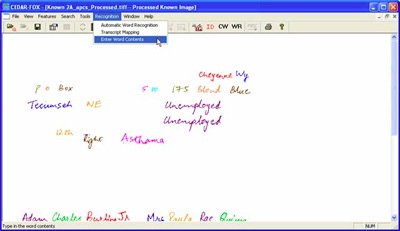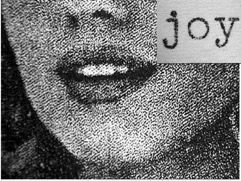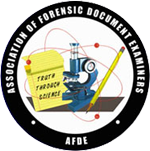Journal of Forensic Document Examination – 2007 Issue
The JFDE is the journal of the Association of Forensic Document Examiners.
Table of Contents and Abstracts [click titles to open and close abstracts]
Sargur N. Srihari, Harish Srinivasan, Kartik Desai
ABSTRACT: Handwriting verification casework often involves comparing the writing in a questioned document with samples of known writing. This paper describes the use of CEDAR-FOX, a software tool for questioned document examination, in a case involving extended writing. The different steps involved from scanning the documents to obtaining a nine-point qualitative measure are described. The various algorithms used, along with a demonstration of its functionalities on the case are also described. The paper serves two purposes; a guide to using a state-of-the-art software system for quantitative anlaysis of handwriting, and an introduction to the science and technology of the software.

Tahnee Dewhurst, Bryan Found and Doug Rogers
ABSTRACT: Signature comparisons are a major component of casework routinely undertaken by forensic document examiners (FDEs). FDEs currently compare handwriting features using subjective visual comparison methods. However, new objective techniques are being developed and tested.

Previous research on signature complexity reported the development of a statistical model to predict whether a questioned (or disputed) signature contained sufficient features to express a valid authorship opinion. The predictions of the statistical model were compared to the opinions of six qualified FDEs on a sample drawn from fifty-three real casework examinations. These cases provide support for the proposition that there was no disagreement between FDEs and the model for identification opinions relating to complex signatures. To further explore the small number of low complexity signatures found in the 53 casework samples, a survey of 566 signatures was conducted. Of the signatures sampled, only 10 (1.8%) were found to be categorised by the model as low complexity signatures. These results indicate support for objective classification as an appropriate approach to further the science of forensic handwriting examination.
M. Patricia Fisher, Joseph G. Barabe, Walter Rantanen
ABSTRACT: A California winery that has selected a different photograph of Marilyn Monroe for each of its Marilyn Merlot releases since 1985 was named as a defendant in a copyright infringement case. The photograph at issue was one taken in 1958 by a photographer named Carl Perutz. Carl Perutz’s only son claimed that he was the rightful owner of the original photograph that the winery used to create its derivative artwork for their 2002 Marilyn Merlot bottle.

Defendant claimed that a photographer named Takashi Oyama was the actual photographer. Defendant obtained a “rare” Marilyn Monroe photo book copyrighted in 1972 that contains photographs of Marilyn Monroe and an alleged interview with Takashi Owama. The book had been auctioned on eBay seven months after the lawsuit had been filed. Plaintiff subpoenaed the photo book for examination by a forensic document examiner to determine whether the photo book was genuine and whether it had been produced in 1972.
Claire R. LaVelle

ABSTRACT: Cases involving digital and electronic signatures are becoming more frequent. In the case of digital signatures, document examiners should recommend the case to a competent computer forensic examiner.
However, in the case of electronic signatures the potential for applying forensic handwriting examination skills remains. If it is possible to get the graphical representation from the vector data, then taking request standards on digital pads might assist in determining the authenticity of an electronic signature. Becoming familiar with the present technology of electronic signatures (software and hardware) will help the forensic document examiner in assessing a case regarding digital and electronic signatures.
by Jan Seaman Kelly and Brian S. Lindbloom
Reviewed by Larry S. Miller
 When a book author passes away and another author takes up the book, the new author can generally proceed in one of two ways. The new author may simply update the original work, maintaining the writing style of the previous author. Or, the new author may elect to totally revise the organization and content essentially creating a new book. Clearly the latter has occurred with the Second Edition of Scientific Examination of Questioned Documents.
When a book author passes away and another author takes up the book, the new author can generally proceed in one of two ways. The new author may simply update the original work, maintaining the writing style of the previous author. Or, the new author may elect to totally revise the organization and content essentially creating a new book. Clearly the latter has occurred with the Second Edition of Scientific Examination of Questioned Documents.
JFDE Issues
Issues from 2014 through the current issue are found at JFDE.org.
- Volume 26, 2016
- Volume 23, 2013
- Volume 22, 2012
- Volume 21, 2011
- Volume 20, 2009-2010
- Volume 19, 2008
- Volume 18, 2007
- Other Back Issues
To purchase back issues or for more information, contact us via email.
